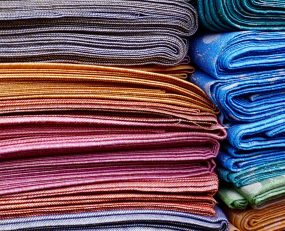
There is a shift towards less mass textile production in China, due to a combination of higher costs, concerns about working conditions and chaotic supply chains. The shift was accelerated by continued supply chain disruption after the onset of the Covid-19 pandemic, which led to a jump in freight costs and shipping delays. This resulted in the textile and garment sector looking for alternative markets.
Indonesia
Indonesia has a large and low-cost labour force, access to raw materials and reasonably well-developed transport networks, although the decision by the US to remove the country from its list of developing countries receiving preferential tariff treatment may hinder its development. Energy prices are also high compared to other countries in the region and currency weakness is impacting on the cost of imported raw materials. In 2022, the textile and garment sector accounted for approximately 11% of manufacturing exports, and 5% of total exports and employed around 4.3 million people.
Bangladesh
Textile and garment production is by far the biggest industry in Bangladesh, which profited from surging sales when Covid-19 lockdowns eased. At the end of 2022 clothes sales fell, resulting in huge inventories at retailers. In a fiercely competitive industry with small margins, Bangladesh is particularly vulnerable to changes in consumer tastes and buying habits. In the first quarter of 2023, the situation with inventories shows little sign of change.
Vietnam
In 2020, Vietnam became the world’s second largest exporter of ready-made garments, with the sector employing around 2.5 million people. There was a big decline in exports in 2022, mainly due to rising inflation in the west. However, in January 2023 tariffs on a range of garments and textiles shipped to the EU were reduced as part of the EVFTA. It is hoped this will stimulate demand.
India
The textile sector accounts for more than 2% of the total GDP and more than 12% of the manufacturing sector gross domestic product (GDP). Like other developing countries, exports have slumped since the Covid-19 pandemic. It has also been stung by preferential tariff treatment towards countries like Bangladesh and Vietnam.
The Indian government is committed to increasing textile exports from India, from the current $44.4 billion to $100 billion in the next five years. This will require addressing the challenges faced by the sector. In September 2021, the Production Linked Incentive Scheme was launched to promote investments in man-made fabric and apparels.
Africa
The production of cotton accounts for almost 7% of all employment in some low-income countries. Out of the many African countries growing and selling cotton, six do so under the label ”Cotton made in Africa” (CmiA). The demand for African designs, textiles, and garments is also increasing within the continent. Currently, in sub-Saharan Africa, the combined apparel and footwear market is estimated at $31 billion.
Ethiopia’s textile and garment industry had been steadily growing, reaching an estimated $171m in exports, but it took a major hit from the onset of the pandemic followed by the Tigray civil war in the north in 2020. However, the biggest blow came from US-imposed sanctions in January 2022. Ending Ethiopia’s preferential market access under the Africa Growth and Opportunity Act (AGOA) has deprived the industry of its biggest client.
In conclusion
China is still the world’s largest textile and garment manufacturer and exporter. Alternatives are developing but transport is an inhibiting factor, so China will retain its dominance in the market due to its strong port and road infrastructure. The alternative markets have long transit times to get to Europe or North America – very few have direct calls by shipping lines which results in additional transhipment costs and time. In addition, domestic road and rail services are often very poor. They also have weak ICT, difficulties in getting trade finance, issues related to water usage and inconsistent energy supplies.
Supply chain strategists can use GSCi – Ti’s online data platform – to identify opportunities for growth, support strategic decisions, help them stay abreast of industry trends and development, as well as understand future impacts on the industry.
Visit GSCI subscription to sign up today or contact: Michael Clover for a free demonstration: [email protected] | +44 (0) 1666 519907